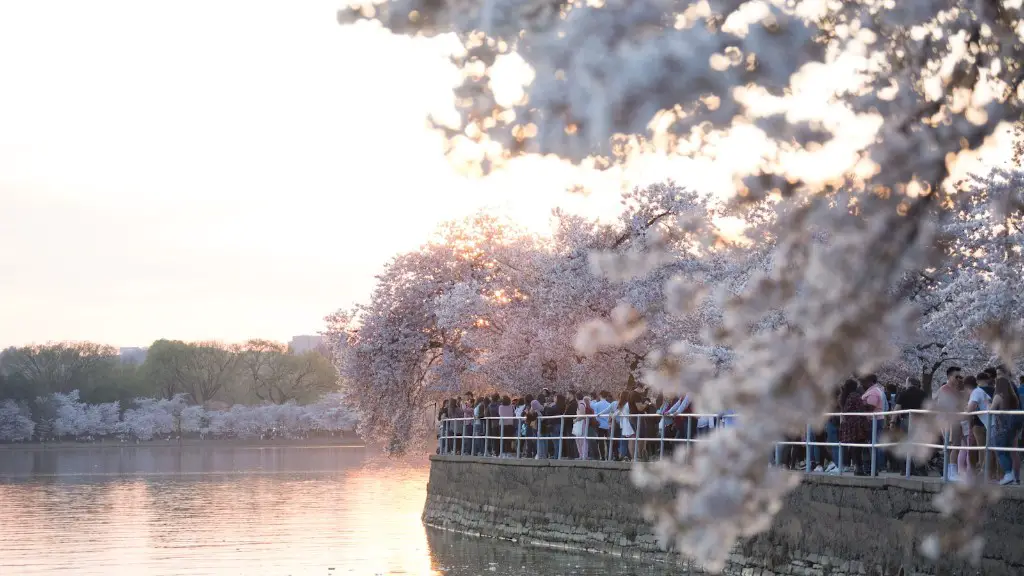An ornamental cherry tree is a beautiful addition to any backyard or garden. Not only is it a stunning specimen, but it can also provide an exceptional scent in the spring and plenty of shade in the summer. However, if your ornamental cherry tree is dying, you may be wondering what is causing it and what you can do to save it. This article will take a look at the most common reasons why an ornamental cherry tree may be dying, as well as what steps you can take to bring your tree back to health.
Firstly, it’s important to understand what an ornamental cherry tree looks like so that you can be sure that yours is actually suffering. Ornamental cherry trees have white, pink, or pale red flowers in the spring, followed by green leaves in the summer and clusters of small, cherry-sized fruit in the fall. If your tree looks brown and brittle or if it’s lacking any of these qualities, it could be an indication of a dying tree.
The most common cause of death in an ornamental cherry tree is a lack of water or too much water. Cherry trees require a deep, consistent watering to thrive, but too much water can cause root rot or other serious issues. In general, ornamental cherry trees should receive about 2 inches of water per week. It’s also important to make sure that the tree is planted in soil that drains well and that it is receiving enough light.
In addition to water, it’s important to fertilize your ornamental cherry tree regularly. Over-fertilizing can cause your tree to become nutrient-rich, resulting in fewer blooms or a thinner canopy. It’s best to use a slow-release fertilizer in the spring and then again in the fall for best results. For maximum health, you should also mulch the tree in late winter or early spring to help protect its roots.
Finally, another potential cause of death in an ornamental cherry tree is disease or pests. It’s important to inspect the tree regularly to check for signs of pests, disease, or other issues. If you spot any pests, such as aphids or spider mites, they should be treated immediately. Likewise, if you notice any suspicious looking patches on the leaves or bark, they should be checked out by a tree care professional to determine if it’s a disease.
Causes of Poor Soil Conditions
Poor soil conditions can also play a part in the death of an ornamental cherry tree. Cherry trees prefer soils that are well drained and rich in organic matter. If your soil is too sandy or clay-based, it can cause your tree’s roots to suffer, resulting in fewer blooms and a weakened canopy. Additionally, soil that is too compacted can reduce the amount of oxygen and water that is reaching the tree’s roots, which can also cause the tree to die.
To prevent poor soil conditions from causing your ornamental cherry tree to suffer, it’s important to check the texture, pH level, and drainage of your soil regularly. If your soil is too acidic or alkaline, you can use a soil amendment to adjust the pH level. Additionally, you should aerate the soil around your tree to improve the structure and drainage.
Pruning and Training
Proper pruning and training are also essential for keeping your ornamental cherry tree healthy and strong. Pruning should be done in late winter and training should be done throughout most of the growing season. Pruning helps to reduce the size and shape of your tree while training helps to keep the branches sturdy and evenly distributed.
When pruning and training, it is best to remove any dead or damaged branches in order to help the tree recover. Additionally, you should leave some of the branches long and uncut in order to promote growth. When training, you should also tie the branches to a stake so that they remain in the desired position.
Conclusion
In conclusion, there are several potential causes of death in an ornamental cherry tree. These include poor soil conditions, inadequate water or fertilization, pests or disease, and improper pruning or training. If you suspect that your tree is dying, it’s important to inspect it and take the necessary steps to bring it back to health. Checking the soil, watering, fertilizing, and pruning regularly will help to ensure that your ornamental cherry tree remains healthy and vibrant for many years to come.
Detection
Detecting the signs of an ailing ornamental cherry tree can help you in treating it quickly and thus saving it from death. Dropping of leaves and wilting of branches are common signs. As ornamental cherry trees are susceptible to diseases such as cherry leaf spot, bacterial blight, and brown rot, it is important to spot these signs in order to diagnose the disease. Symptoms such as discoloration of leaves and stems, premature leaf drop and dead branches may signal the presence of a disease.
In addition, other problems such as pests, soil or light issues can also lead to the death of ornamental cherry trees. Signs of pests include damage to leaves and stems caused by insects or mites, as well as sawdust around the tree. If the tree does not appear to be getting adequate soil or light, it may be weak and diseased. It is important to inspect the tree thoroughly and address any problems immediately to prevent further damage.
Treatment
Once you have diagnosed the problem with your ornamental cherry tree, it is important to treat it as quickly as possible. Treatment can range from pruning dead and diseased branches, to treating insects and pests, to changing the soil or light conditions of the tree. Additionally, you should pay close attention to your watering and fertilizing regimen, as it can greatly impact the health of the tree.
In the event that you suspect disease, it is important to call a professional arborist for advice. An experienced arborist can help to identify the disease and suggest the best treatment for your tree. In some cases, it may even be necessary to treat the tree with a fungicide or other chemical treatment.
Stress Management
Another important step in saving an ornamental cherry tree from death is to reduce stress. Stress can come in many forms, such as too much watering or nutrient imbalance, over-fertilizing, or construction damage. If your ornamental cherry tree is in a stressful environment, it is important to take steps to reduce the stress. This may include providing deep, consistent waterings, planting the tree in a well-drained location, or avoiding the use of chemical fertilizers or herbicides.
Stress-reducing treatments, such as pruning or thinning of branches, can also help to reduce stress and encourage the recovery of the tree. If your ornamental cherry tree is in a stressful environment, it is important to take steps to reduce the stress and ensure that it is returning to health.
Restoration
Finally, once the tree has been treated, it is important to monitor it to ensure that it returns to its full health. Filling in any holes in the canopy with new growth and providing deep, consistent waterings will help to encourage the tree’s recovery. Additionally, it is important to limit the amount of fertilizer used to avoid over-fertilizing, and to provide adequate airflow to prevent disease.
If your ornamental cherry tree is struggling, it is important to take steps to restore its health. Proper diagnosis, treatment, and restoration are essential to save the tree from dying. By understanding the causes of death in ornamental cherry trees and taking quick action to restore its health, you can ensure that your tree is flourishing for years to come.


